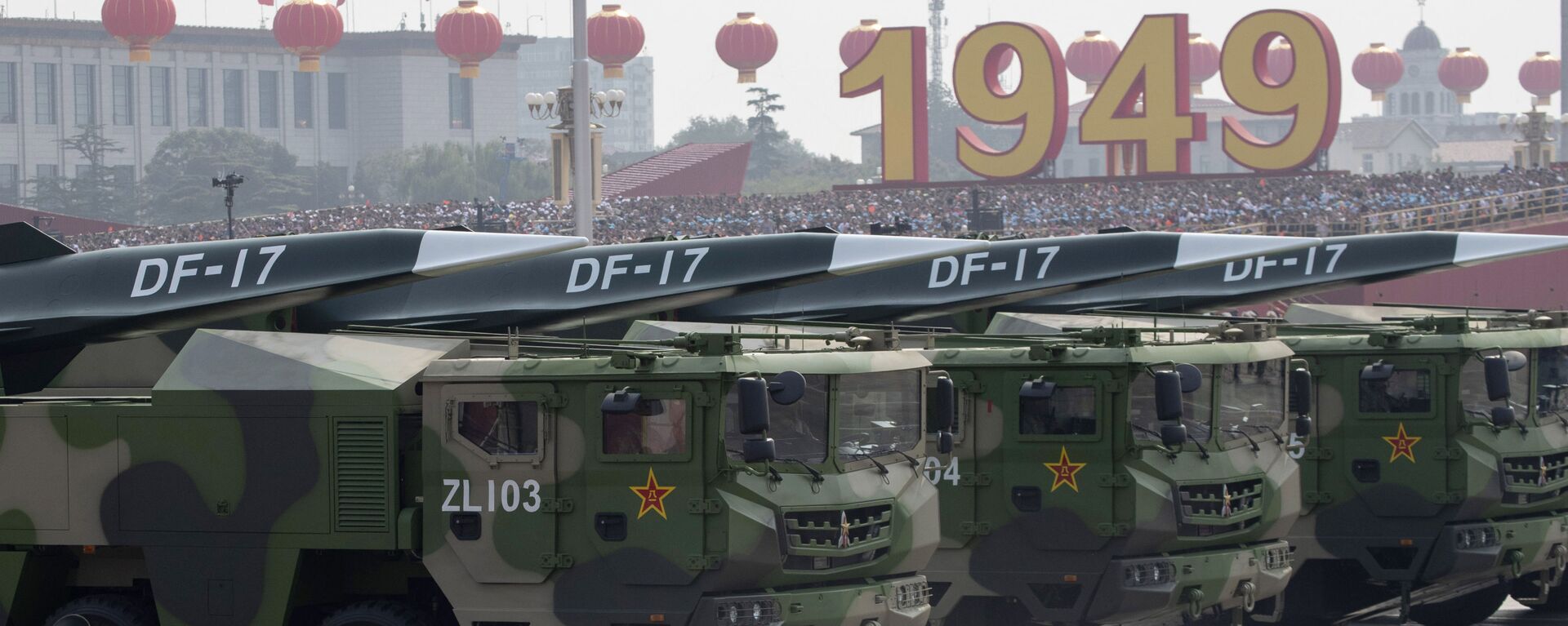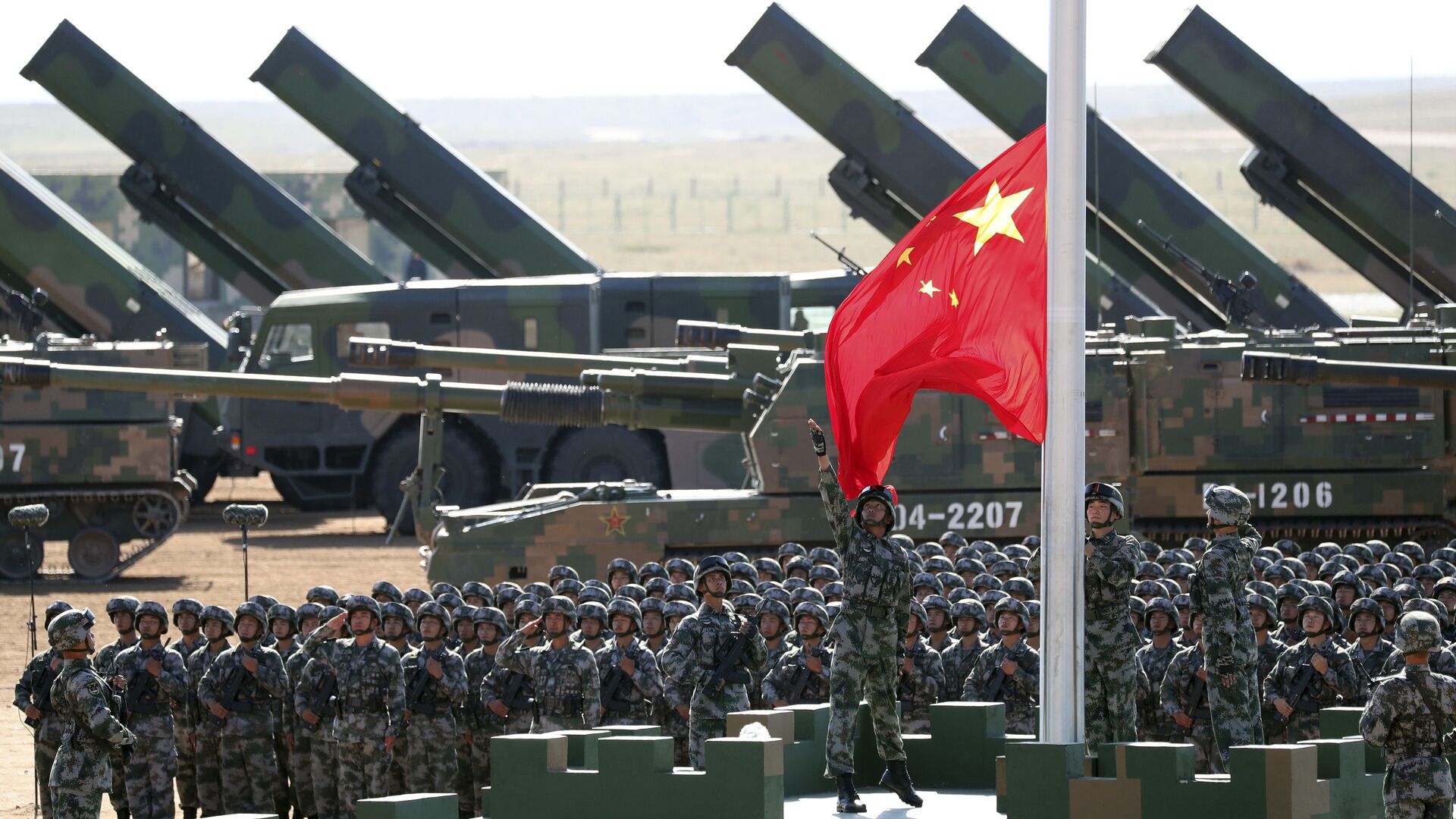https://sputnikglobe.com/20211211/us-media-warns-pentagon-needs-new-tech-to-avoid-showing-up-to-gunfight-with-china-with-a-knife-1091442400.html
US Media Warns Pentagon Needs New Tech to Avoid Showing Up to Gunfight With China With a Knife
US Media Warns Pentagon Needs New Tech to Avoid Showing Up to Gunfight With China With a Knife
Sputnik International
The United States outspent the People’s Republic on defence $753.5 billion to $209 billion in 2021, but military officials and analysts have expressed fears... 11.12.2021, Sputnik International
2021-12-11T14:41+0000
2021-12-11T14:41+0000
2021-12-11T14:41+0000
america
china
military
defence capabilities
https://cdn1.img.sputnikglobe.com/img/105602/84/1056028479_0:260:5000:3073_1920x0_80_0_0_d79ba293436900b61ed0cf77e870cbd0.jpg
The Pentagon will need to acquire a host of new capabilities to counter the increasingly advanced systems and weapons being developed and fielded by China which match, exceed, or asymmetrically suppress those of the United States, Forbes aerospace and defence contributor Vikram Mittal has suggested.In an analysis published in the business newspaper on Friday, the observer indicated that while the threat of naked military confrontation between the economic superpowers is not imminent today, the Pentagon will need time before a possible clash to research, build and field new weapons and defensive systems in areas where China’s capabilities pose a threat. As such, Washington should invest now to avoid “showing up with the proverbial knife to a gunfight” with its Asian adversary, he suggested.Mittal points to a number of areas where the US military risks lagging behind, including counter-unmanned aerial vehicle (UAV) technology, where America’s current capabilities are directed largely toward shooting down simple, modified off-the-shelf drones used by insurgents in poor countries. “The drones used by China are substantially more advanced, have a higher degree of autonomy, and can produce much more damaging effects,” the analyst warns, pointing to footage released last year of a People’s Liberation Army test of a new suicide drone swarm weapon resembling a multiple launch rocket system (MLRS).The Forbes contributor noted that existing US R&D into anti-drone tech, such as an interceptor being developed by Virginia-based aeronautics company Aurora Flight Sciences, a mobile counter-drone defence-in-depth system known as OTM V4 created by ELTA – an Israeli defence firm, and anti-UAV kinetic interception kit delivered to the DoD known as the ‘Skylord Griffon’ by XTEND, another Israeli company, are insufficient to counter the capabilities being created by China.The PRC’s lead on hypersonic weapons is another problem, Mittal argues, suggesting that the US Army urgently needs to create air defence systems to counter such arms. One such capability is expected to come in the form of Northrop Grumman’s Hypersonic and Ballistic Tracking Space Sensor system, a new generation of low-orbiting satellites to detect and monitor hypersonic missile launches. That system is expected to achieve full operational capability in 2026, absent delays.China officially joined the hypersonic weapons club in 2019, when the PLA accepted the DF-ZF conventional and nuclear-capable hypersonic glide vehicle into service. The United States has at least seven hypersonic weapons systems in the works, but only one – the Army-Navy Common Hypersonic Glide Body, is anywhere near operational status. In October, the US Army announced that it would be taking delivery of its first CHGB system, without the missiles, which are expected to be delivered only sometime in fiscal year 2023.There are other areas where the US military faces risks, Mittal believes, pointing to weaknesses in the US military communications networks, with the current US Multi-Domain Operations doctrine requiring secure communication to synchronize action between units to multiply their offensive and defensive capabilities.“Unfortunately, China has significant cyber and electronic warfare capabilities that can degrade, disrupt, or deny US military communication. Moreover, even without an adversarial attack, the US military communication networks are not reliable, somewhat disjointed, and require modernization,” the observer laments. The Pentagon is hoping to ameliorate the situation with the Joint All-Domain Command and Control System –a new loose meta-network capable of sharing all kinds of information across physical (land, sea, air, space) and digital (cyberspace) domains, but even then, Mittal warns, “the communication space will likely still be contested.”Finally, the Forbes observer says, there is the Chinese threat to US military supply lines. These issues can be resolved, he hopes, with the creation of new additive manufacturing technology for the development of spare parts in the places precisely where they are needed, and by sourcing or producing fuel locally using carbon-based material to at least partially do away the need for traditional fuel deliveries.Mittal’s concerns join a chorus of recent analyses by US military experts and geopolitical observers citing the danger of the US losing a war with China. In October, National Interest contributor and Harvard Kennedy School of government professor Graham Allison warned that Washington must recognize the “ugly” reality that China’s advances in anti-access/area-denial (A2/AD) capabilities – consisting of everything from anti-ship and anti-air missile systems to long-range ballistic and cruise missiles, electronic warfare and interceptor aircraft, means there is no guarantee of a US victory in a war over Taiwan. The solution, Allison suggested, must lie in diplomacy.
https://sputnikglobe.com/20210105/chinas-df-17-hypersonic-missile-seen-to-get-stealth-upgrade-reports-show-1081656334.html
https://sputnikglobe.com/20200618/us-report-claims-china-intends-nuclear-first-strike-with-stolen-super-emp-weapons-1079656094.html
https://sputnikglobe.com/20211107/us-media-reveals-how-china-could-test-biden-on-taiwan-without-starting-full-scale-war-1090549515.html
china
Sputnik International
feedback@sputniknews.com
+74956456601
MIA „Rosiya Segodnya“
2021
News
en_EN
Sputnik International
feedback@sputniknews.com
+74956456601
MIA „Rosiya Segodnya“
Sputnik International
feedback@sputniknews.com
+74956456601
MIA „Rosiya Segodnya“
america, china, defence capabilities
america, china, defence capabilities
US Media Warns Pentagon Needs New Tech to Avoid Showing Up to Gunfight With China With a Knife
The United States outspent the People’s Republic on defence $753.5 billion to $209 billion in 2021, but military officials and analysts have expressed fears that Washington is lagging behind Beijing in a number of critical technologies, including AI and hypersonic missiles.
The Pentagon will need to acquire a host of new capabilities to counter the increasingly advanced systems and weapons being developed and fielded by China which match, exceed, or asymmetrically suppress those of the United States, Forbes aerospace and defence contributor Vikram Mittal has suggested.
In an
analysis published in the business newspaper on Friday, the observer indicated that while the threat of naked military confrontation between the economic superpowers is not imminent today, the Pentagon will need time before a possible clash to research, build and field new weapons and defensive systems in areas where China’s capabilities pose a threat. As such, Washington should invest now to avoid “showing up with the proverbial knife to a gunfight” with its Asian adversary, he suggested.
Mittal points to a number of areas where the US military risks lagging behind, including counter-unmanned aerial vehicle (UAV) technology, where America’s current capabilities are directed largely toward shooting down simple, modified off-the-shelf drones used by insurgents in poor countries.
“The drones used by China are substantially more advanced, have a higher degree of autonomy, and can produce much more damaging effects,” the analyst warns, pointing to footage
released last year of a People’s Liberation Army test of a new suicide drone swarm weapon resembling a multiple launch rocket system (MLRS).
The Forbes contributor noted that existing US R&D into anti-drone tech, such as an interceptor
being developed by Virginia-based aeronautics company Aurora Flight Sciences, a mobile counter-drone defence-in-depth system known as
OTM V4 created by ELTA – an Israeli defence firm, and anti-UAV kinetic interception kit delivered to the DoD known as the
‘Skylord Griffon’ by XTEND, another Israeli company, are insufficient to counter the capabilities being created by China.
The PRC’s lead on hypersonic weapons is another problem, Mittal argues, suggesting that the US Army urgently needs to create air defence systems to counter such arms. One such capability is expected to come in the form of Northrop Grumman’s
Hypersonic and Ballistic Tracking Space Sensor system, a new generation of low-orbiting satellites to detect and monitor hypersonic missile launches. That system is expected to achieve full operational capability in 2026, absent delays.
China officially joined the hypersonic weapons club in 2019, when the PLA accepted the DF-ZF conventional and nuclear-capable hypersonic glide vehicle into service. The United States has at least seven hypersonic weapons systems in the works, but only one – the Army-Navy Common Hypersonic Glide Body, is anywhere near operational status. In October, the US Army announced that it would be taking delivery of its first CHGB system, without the missiles, which are expected to be delivered only sometime in fiscal year 2023.

5 January 2021, 12:40 GMT
There are other areas where the US military faces risks, Mittal believes, pointing to weaknesses in the US military communications networks, with the current US Multi-Domain Operations doctrine requiring secure communication to synchronize action between units to multiply their offensive and defensive capabilities.
“Unfortunately, China has significant cyber and electronic warfare capabilities that can degrade, disrupt, or deny US military communication. Moreover, even without an adversarial attack, the US military communication networks are not reliable, somewhat disjointed, and require modernization,” the observer laments. The Pentagon is hoping to ameliorate the situation with the Joint All-Domain Command and Control System –a new loose meta-network capable of sharing all kinds of information across physical (land, sea, air, space) and digital (cyberspace) domains, but even then, Mittal warns, “the communication space will likely still be contested.”
Finally, the Forbes observer says, there is the Chinese threat to US military supply lines. These issues can be resolved, he hopes, with the creation of new additive manufacturing technology for the development of spare parts in the places precisely where they are needed, and by sourcing or producing fuel locally using carbon-based material to at least partially do away the need for traditional fuel deliveries.
Mittal’s concerns join a chorus of recent analyses by US military experts and geopolitical observers citing the danger of the US losing a war with China. In October, National Interest contributor and Harvard Kennedy School of government professor Graham Allison warned that Washington must recognize
the “ugly” reality that China’s advances in anti-access/area-denial (A2/AD) capabilities – consisting of everything from anti-ship and anti-air missile systems to long-range ballistic and cruise missiles, electronic warfare and interceptor aircraft, means there is no guarantee of a US victory in a war over Taiwan. The solution, Allison suggested, must lie in diplomacy.

7 November 2021, 18:37 GMT







